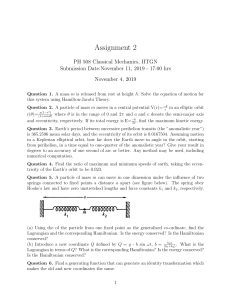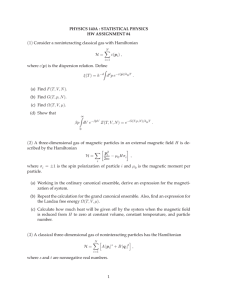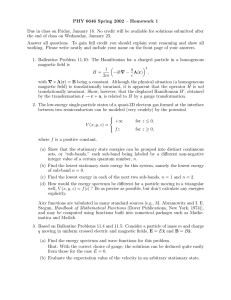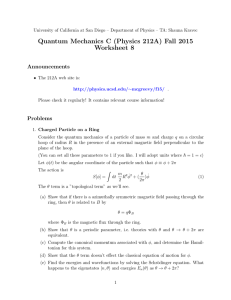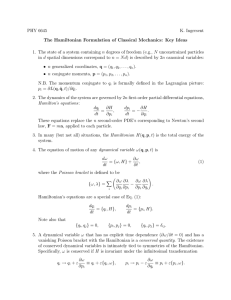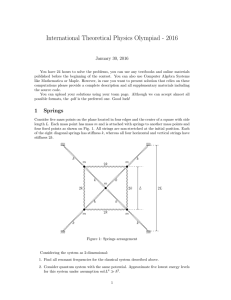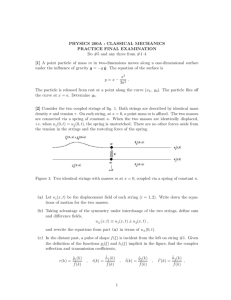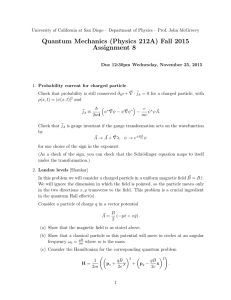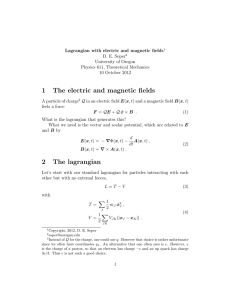Homework Assignment 6 Physics 302, Classical Mechanics Problems Fall 2010
advertisement
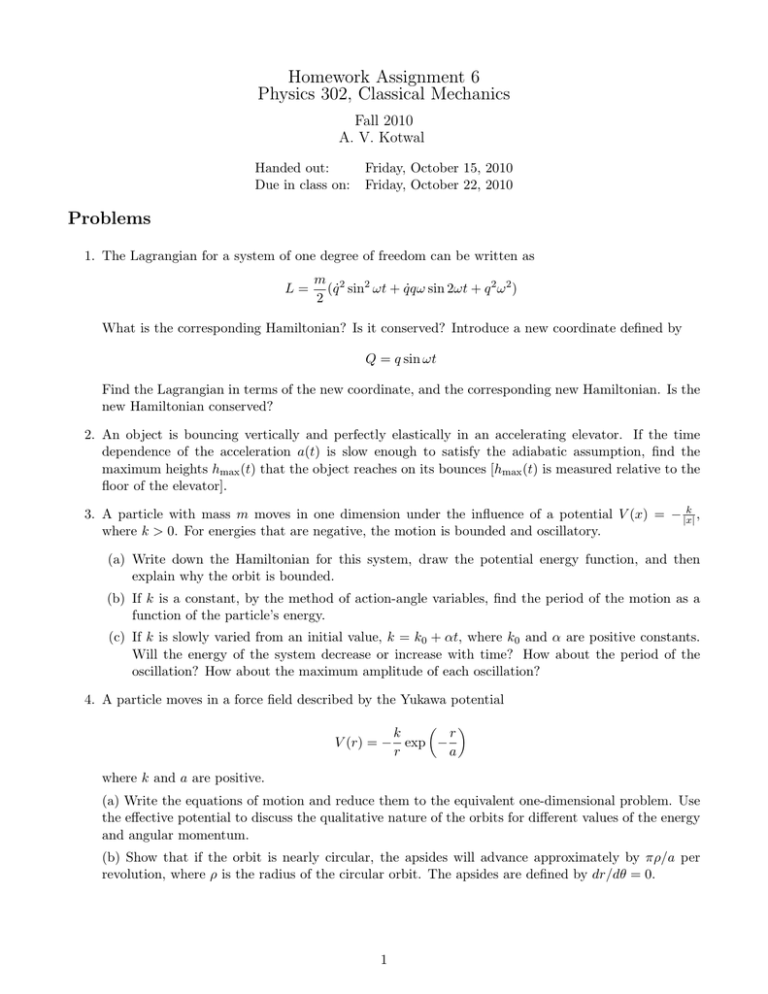
Homework Assignment 6 Physics 302, Classical Mechanics Fall 2010 A. V. Kotwal Handed out: Due in class on: Friday, October 15, 2010 Friday, October 22, 2010 Problems 1. The Lagrangian for a system of one degree of freedom can be written as L= m 2 2 (q̇ sin ωt + q̇qω sin 2ωt + q 2 ω 2 ) 2 What is the corresponding Hamiltonian? Is it conserved? Introduce a new coordinate defined by Q = q sin ωt Find the Lagrangian in terms of the new coordinate, and the corresponding new Hamiltonian. Is the new Hamiltonian conserved? 2. An object is bouncing vertically and perfectly elastically in an accelerating elevator. If the time dependence of the acceleration a(t) is slow enough to satisfy the adiabatic assumption, find the maximum heights hmax (t) that the object reaches on its bounces [hmax (t) is measured relative to the floor of the elevator]. k , 3. A particle with mass m moves in one dimension under the influence of a potential V (x) = − |x| where k > 0. For energies that are negative, the motion is bounded and oscillatory. (a) Write down the Hamiltonian for this system, draw the potential energy function, and then explain why the orbit is bounded. (b) If k is a constant, by the method of action-angle variables, find the period of the motion as a function of the particle’s energy. (c) If k is slowly varied from an initial value, k = k0 + αt, where k0 and α are positive constants. Will the energy of the system decrease or increase with time? How about the period of the oscillation? How about the maximum amplitude of each oscillation? 4. A particle moves in a force field described by the Yukawa potential k r V (r) = − exp − r a where k and a are positive. (a) Write the equations of motion and reduce them to the equivalent one-dimensional problem. Use the effective potential to discuss the qualitative nature of the orbits for different values of the energy and angular momentum. (b) Show that if the orbit is nearly circular, the apsides will advance approximately by πρ/a per revolution, where ρ is the radius of the circular orbit. The apsides are defined by dr/dθ = 0. 1 ~ = b~r/r3 , where b is a 5. A magnetic monopole is defined by a magnetic field singularity of the form B constant measuring the magnetic charge of the monopole. Suppose a particle of mass m and charge q moves in the field of a magnetic monopole and a central force field derived from the potential V (r) = −k/r. ~ By looking at the product ~r × p~˙ show that while the mechanical The Lorentz force F~ = qc ~v × B. angular momentum is not conserved (the field of force is non-central) there is a conserved vector ~ =L ~ − qb ~r D c r 2
